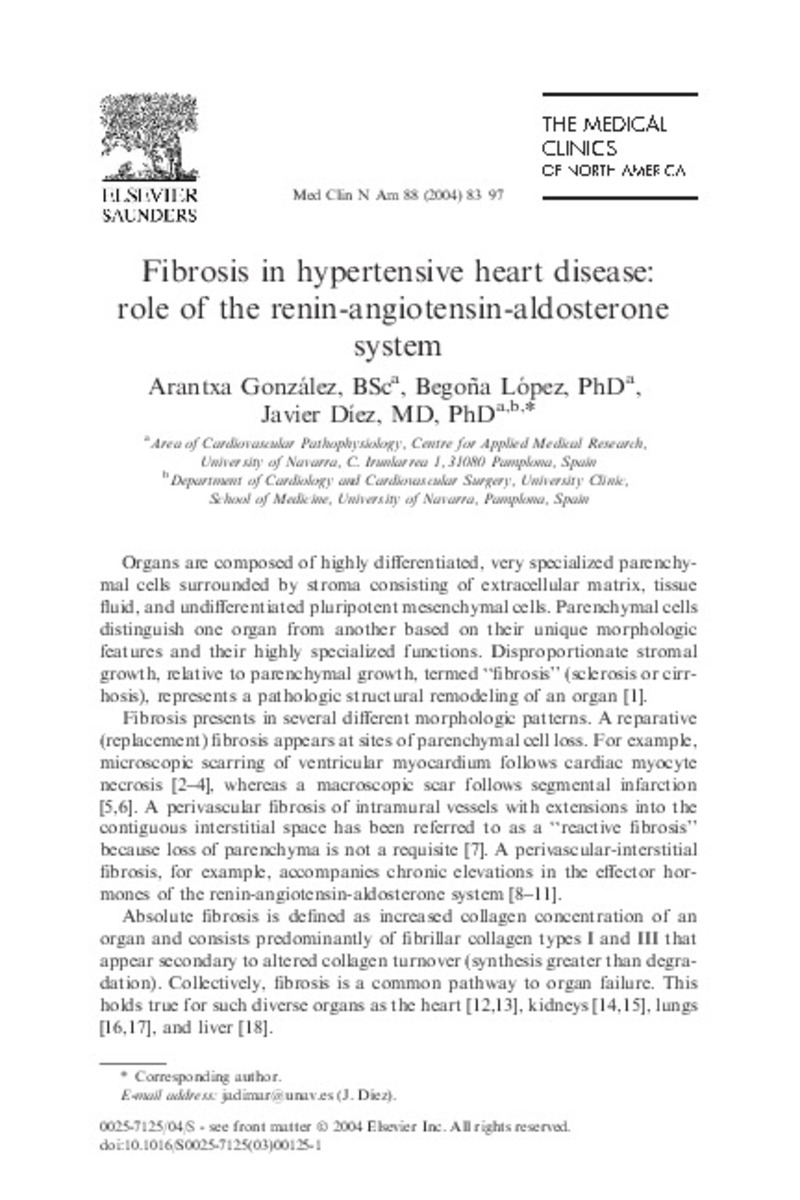Fibrosis in hypertensive heart disease: role of the renin-angiotensin-aldosterone system
Palabras clave :
Angiotensin II/physiology
Collagen/biosynthesis
Collagen/metabolism
Collagen/physiology
Hypertension/pathology
Renin-Angiotensin System/physiology
Fecha de publicación :
2004
Cita:
Gonzalez A, Lopez B, Diez J. Fibrosis in hypertensive heart disease: role of the renin-angiotensin-aldosterone system. Med Clin North Am 2004 Jan;88(1):83-97.
Aparece en las colecciones:
Estadísticas e impacto
0 citas en

0 citas en

Los ítems de Dadun están protegidos por copyright, con todos los derechos reservados, a menos que se indique lo contrario.










